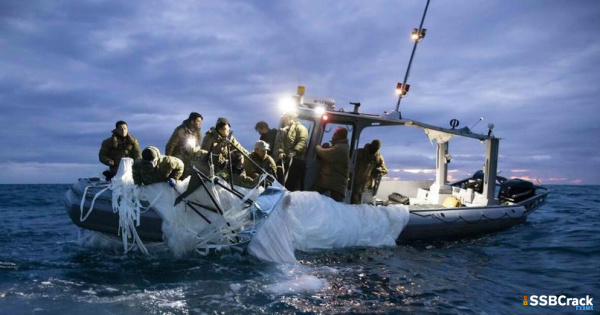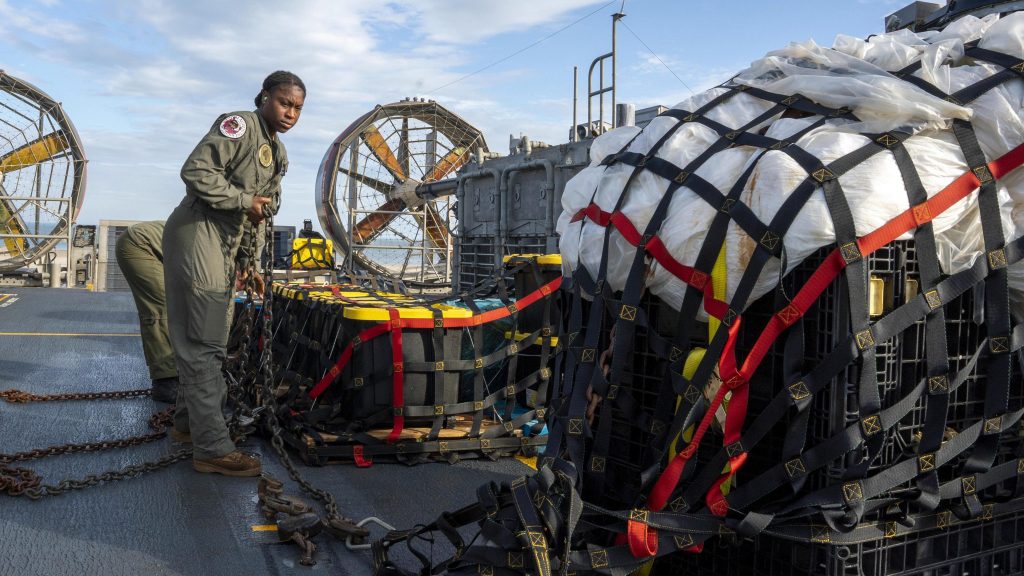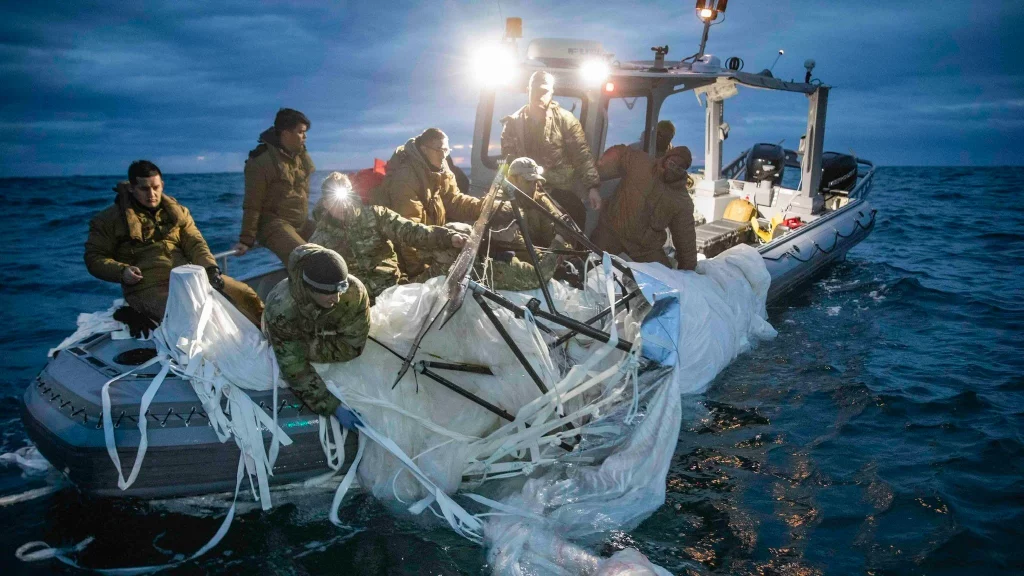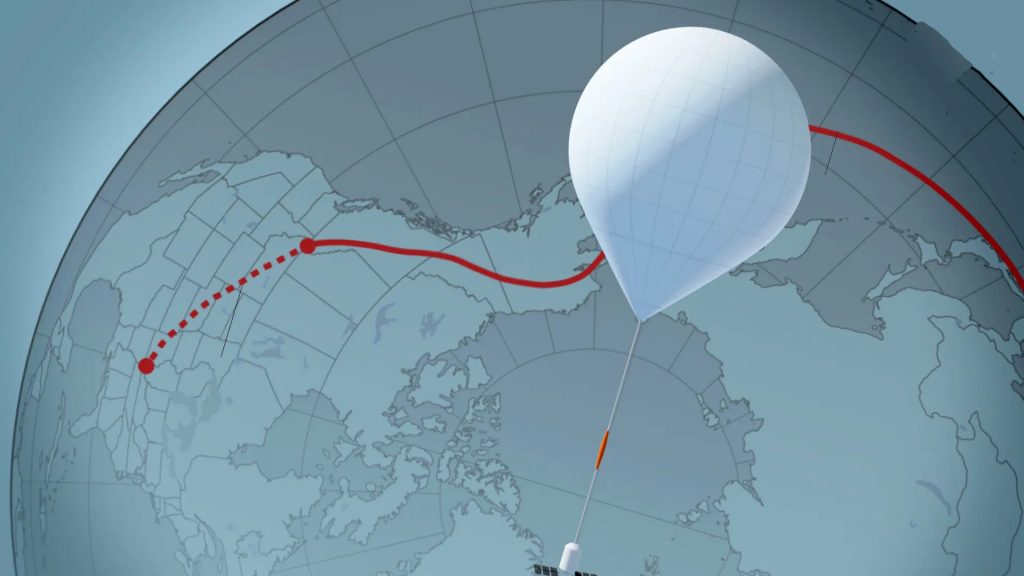Last week, the US shot down a Chinese spy balloon, just days after the surveillance device was first spotted over American airspace, bringing the dramatic saga that had been playing out on televisions and social media to an explosive climax and dealing yet another blow to the two countries already strained diplomatic relations.
The Controversy of the Spy Balloon
Reports of a massive white orb, believed to be the size of three school buses, seen floating high above the U.S. state of Montana earlier this month drew worldwide attention as theories about its origin emerged and people attempted to track the craft’s real-time position.
To put an end to speculation, American defense, and military officials confirmed that the reconnaissance balloon had flown from China, entered the air defense zone north of the Aleutian Islands on January 28, then moved over land across Alaska and into Canadian airspace before crossing back into the United States over Idaho.
President Joe Biden was briefed on the situation, and the military considered shooting down the balloon, which the Pentagon suspected was a Chinese surveillance tool carrying sensors and equipment to collect data on military and other strategic sites such as Montana, which is home to one of the country’s three nuclear missile silo fields. Officials discovered that the balloon could be maneuvered and changed course. “We witnessed it do that. It hovered over certain locations. It swung left and right. We observed it maneuvering within the jet stream. That’s how it was working,” an official explained. They went on to say that the balloon had propellers and rudders.
Despite the fact that the balloon was unarmed, the Pentagon decided against aerial action at the time due to the risks to those on the ground posed by its massive size and altitude. The Federal Aviation Administration of the United States halted air traffic at three airports as a precaution.
After initial reluctance, the Chinese Foreign Ministry acknowledged that the’spy’ balloon was from China, but rejected claims of spying. It insisted that the balloon was an errant civilian airship used primarily for meteorological research that became disoriented due to strong winds. “The Chinese side regrets the unintentional entry of the airship into US airspace due to force majeure. “The Chinese side will continue to communicate with the US side and properly handle this unexpected situation caused by force majeure,” the statement said. Beijing also expressed “regret” over the incident, while insisting that it respects the sovereignty of other countries.
How was the balloon shot down?
Long before the shootdown, US officials took precautions to prevent the balloon from collecting sensitive information, reducing its intelligence value to the Chinese. NASA assessed the debris field ahead of the mission based on the balloon’s trajectory, weather, and estimated sensor payload. The mission included multiple fighters and refueling aircraft, including F-15s and tanker planes. But it was an F-22 Raptor fighter jet taking off from a Virginia air force base that brought the balloon down with a short-range AIM-9X Sidewinder missile. After being shot down by an F-22 fighter jet, the spy balloon drifts to the ocean. Photographer: Reuters
From a height of 58,000 feet, the F-22 launched the Sidewinder at the balloon. The missile pierced the balloon while it was hovering between 60,000 and 65,000 feet in the air (18-20 km). According to reports, debris was strewn across 11 kilometers, with the majority landing in shallow water.
A video of the balloon’s demise showed a small explosion, followed by parts of the deflated balloon falling into the ocean. After the mission was completed, the United States notified China of its actions. The downing of the balloon by a missile drew a strong reaction from China which insisted that the flyover was an accident and criticized America for an “obvious overreaction”. According to the Chinese Foreign Ministry, the decision to shoot down the balloon has “seriously impacted and damaged” relations between the two countries.
What are Spy Balloons?
Spy balloons are high-altitude surveillance tools that typically operate at altitudes ranging from 80,000 to 120,000 feet — well above the cruising altitude of commercial aircraft — to gather intelligence and carry out other military missions. A spy balloon is typically outfitted with cameras and imaging devices suspended beneath the gas-filled white object to capture objects of interest. Balloons, unlike satellites, are economically viable.
Because of their proximity to the Earth’s surface, they can scan a large area from a close distance and capture clearer, higher-resolution images of the target. The disadvantage is that these cannot be directly controlled, but can be roughly guided by changing altitudes to catch different wind currents, according to a study conducted by the Air Force’s Airpower Research Institute. They’re also a fairly easy target.
What is China’s fascination with high-altitude balloons?
China was the first to use balloons for surveillance, along with Chinese lanterns. The lanterns were used to send messages, spy on enemies, and alert allies. China has been working on advanced balloon technology ever since.
Researchers highlighted one of the useful military applications of balloons in a recent paper published by one of the People’s Liberation Army (PLA) institutes. “[The balloon] can induce and mobilize the enemy’s air defense system, allowing for the implementation of electronic reconnaissance, early warning detection, and operational response capabilities,” researchers wrote. According to Reuters, government tenders show that Chinese military units and state-run research institutes have purchased high-altitude balloons and related technology in the last two years.
To crack the SSB Interview, You can join our SSB interview live classes batch and we recommend you to Enroll SSB INTERVIEW ONLINE COURSE. Trusted by thousands of defence aspirants.


























